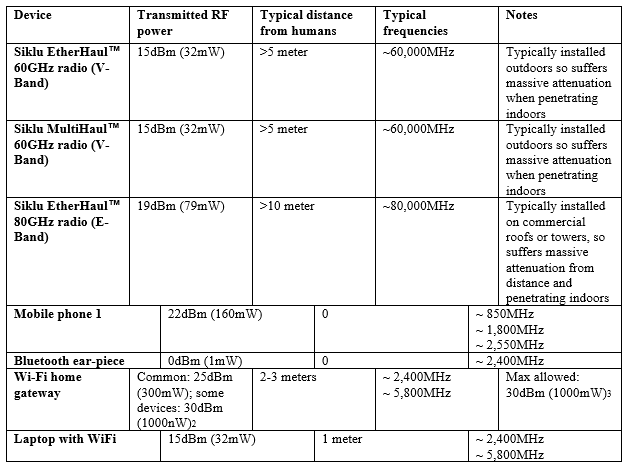When presented with an unknown, people immediately assume the worst. Sailors centuries ago had no idea what was under the water – hence there must be monsters. What are those strange lights in the sky at night? Must be Gods. And today, what the heck is this 5G stuff? If it is so amazingly fast, it must be using a lot of RF radiation right next to my head! And away we go. The facts however are clear and unambiguous.
According to an article from the NY Times, experts on the biological effects of electromagnetic radiation even claim that radio waves become safer at higher frequencies, not more dangerous. 5G if anything is safer than your old analog Motorola flip phone or your existing LTE phone.
5G is a term that started with one very precise definition, but over the past year has expanded in scope. Today when people talk about 5G and its benefits, they tend to focus on 5G NR which is the new mobile standard that was released recently. 5G NR has some fancy differences in how the data is transferred when compared to 4G LTE, but more of note are the frequency bands it will operate in. 5G NR as a mobile standard will for the first time operate in 28GHz and 38GHz, licensed bands that Mobile Network Operators (MNOs) use for their networks. Other “5G” technologies operate in even higher frequencies, 60GHz (V band) and 70/80GHz (E bands). These “Fixed 5G” frequencies are either unlicensed (V Band) or lightly licensed (E Band) around the world and are used for gigabit, fixed wireless Wide Area Networks.

5G Safety
There have been concerns that operating in these higher frequencies is somehow inherently unsafe or not healthy. On the contrary, these frequencies penetrate the human body dramatically less than 4G LTE radio waves do today. Indeed, the above-mentioned NY Times article also makes that point – higher frequency waves have less skin penetration than low frequency waves.
Fixed 5G which operates in the 60GHz band is even higher in frequency and hence less of a health concern. Not only do the systems being deployed in 60GHz have less penetrating ability, the power levels and how close they are to the human body is substantially less than a typical cellular phone. A Siklu 60Ghz radio, either EtherHaul™ or MultiHaul™, operates at a peak power of 15dBm and is outside your house or place of business. In contrast your cellular phone which you hold next to your head, puts out 22dBm, your home AP 25dBm and your laptop Wi-Fi 15dBm. The table below highlights these comparisons.

5G Acceptance
While it is always prudent to be careful when new technology is presented, in this case the science clearly shows 5G, either NR or fixed, operating in the mmWave bands is if anything safer than exiting mobile systems today. Systems which have themselves been studied and determined to be safe. Indeed, anecdotal evidence of this abounds just by considering the widespread regulatory acceptance of 60GHz globally. The FCC, ETSI (EU) and Ofcom (UK) to name three of the largest regulators around the world have deemed 60GHz safe and have authorized its use. More countries by the month are opening up these bands as they conclude that:
1) there is no health danger to the populace
2) the societal benefit from being able to rapidly deploy gigabit networks to the underserved around the world is too powerful to delay.
This does not take into account the Mobile 5G frequencies of 28GHz and 38GHz that are allowed virtually everywhere in the world 5G is being deployed.
mmWave frequencies
So, what about mmWave frequencies? Millimeter-wave frequencies represent a tremendous value when it comes to creating affordable Gigabit speed networks and they pose even less of a potential health risk than current cellular and Wi-Fi networks and
products. You can read more about the technology and learn how it is safe to use in this brochure.
Summary
Introducing new technology is never easy, and requires that the benefit be enough of an improvement over the previous generation to warrant the money and effort. This is especially true when we consider advances in wireless communications. It is well understood from Wi-Fi and Mobile networks that easy access to high speed wireless networks turbo charges economies and levels the playing field for all to access. It is easy to see how this is also true with mmWave Fixed 5G networks in the 60GHz band. Being unlicensed accelerates deployments, and drives massive capacity increases in the last mile access networks.
Wireless evolution tends to face additional hurdles as people are always concerned about radiation. Fortunately, as has been demonstrated over the years with 2G, 3G, 4G and now 5G these concerns are not warranted. mmWave networks are the future of wireless, and will be the backbone of gigabit wireless networks around the world delivering gigabits for all. Rest assured this expansion of 5G will not “cook your brain,” its not even enough to warm your coffee.